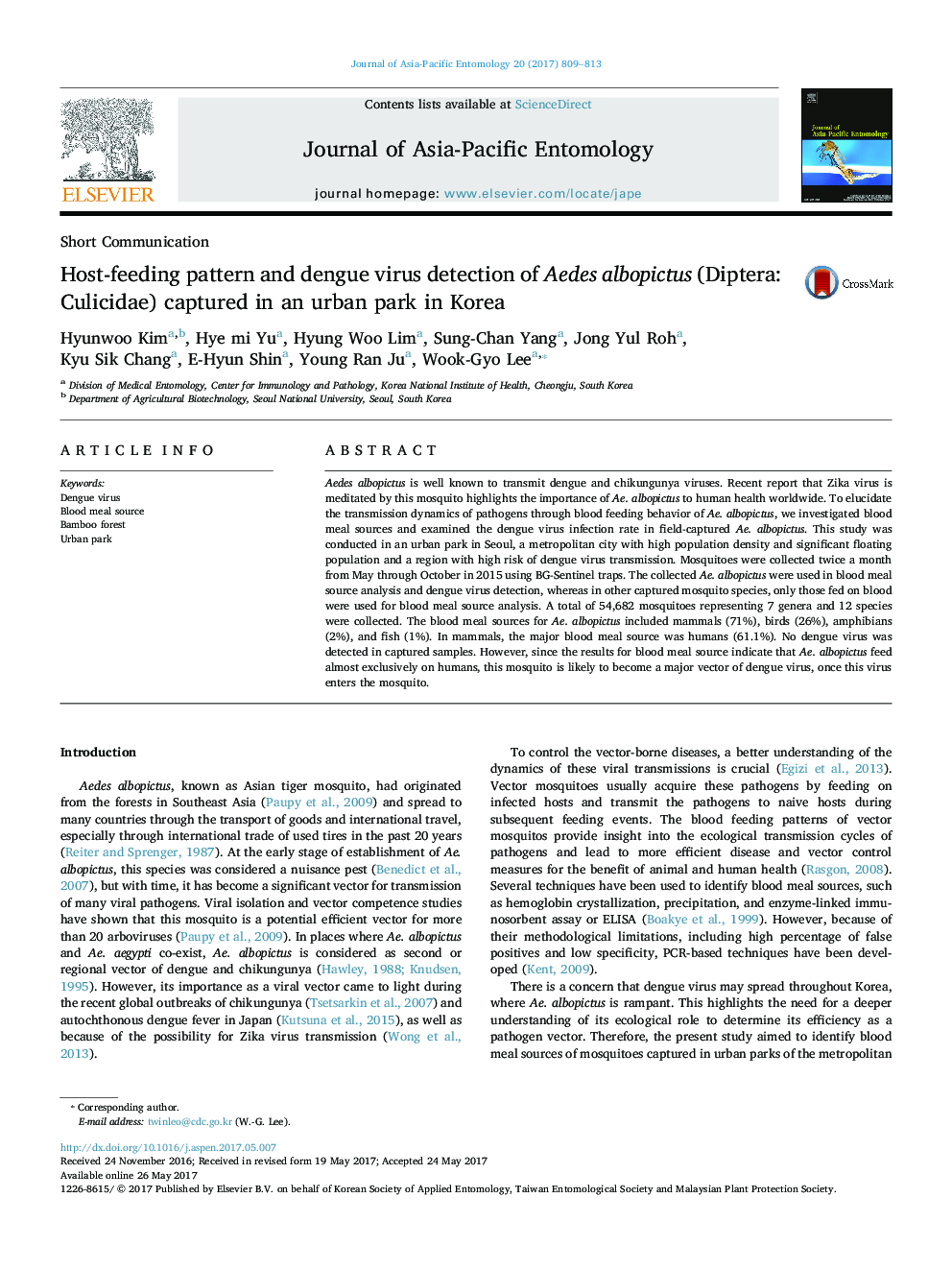| کد مقاله | کد نشریه | سال انتشار | مقاله انگلیسی | نسخه تمام متن |
|---|---|---|---|---|
| 5763510 | 1412973 | 2017 | 5 صفحه PDF | دانلود رایگان |

- Blood meal source was investigated in field-captured Aegilops albopictus.
- Mammals and humans are the main blood meal source in urban areas.
- Dengue fever was not detected in captured mosquitos.
Aedes albopictus is well known to transmit dengue and chikungunya viruses. Recent report that Zika virus is meditated by this mosquito highlights the importance of Ae. albopictus to human health worldwide. To elucidate the transmission dynamics of pathogens through blood feeding behavior of Ae. albopictus, we investigated blood meal sources and examined the dengue virus infection rate in field-captured Ae. albopictus. This study was conducted in an urban park in Seoul, a metropolitan city with high population density and significant floating population and a region with high risk of dengue virus transmission. Mosquitoes were collected twice a month from May through October in 2015 using BG-Sentinel traps. The collected Ae. albopictus were used in blood meal source analysis and dengue virus detection, whereas in other captured mosquito species, only those fed on blood were used for blood meal source analysis. A total of 54,682 mosquitoes representing 7 genera and 12 species were collected. The blood meal sources for Ae. albopictus included mammals (71%), birds (26%), amphibians (2%), and fish (1%). In mammals, the major blood meal source was humans (61.1%). No dengue virus was detected in captured samples. However, since the results for blood meal source indicate that Ae. albopictus feed almost exclusively on humans, this mosquito is likely to become a major vector of dengue virus, once this virus enters the mosquito.
362
Journal: Journal of Asia-Pacific Entomology - Volume 20, Issue 3, September 2017, Pages 809-813